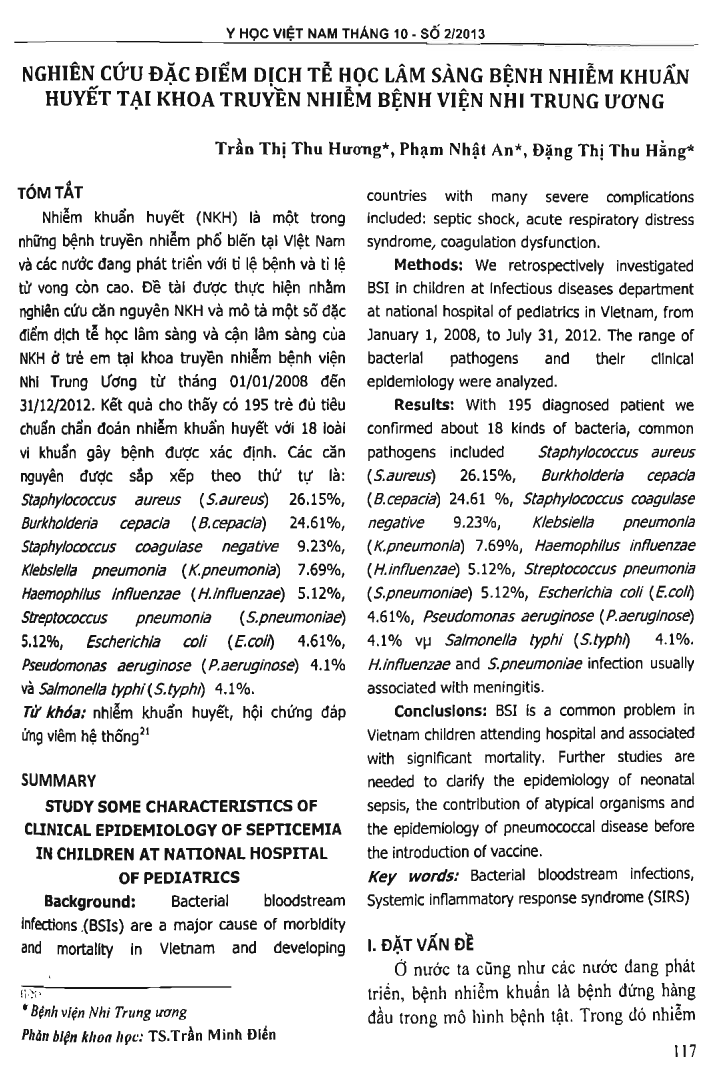
Background: Bacterial bloodstream infections .(BSIs) are a major cause of morbidity and mortality in Vietnam and developing countries with many severe complications included: septic shock, acute respiratory distress syndrome, coagulation dysfunction. Methods: the authors retrospectively investigated BSI in children at infectious diseases department at national hospital of pediatrics in Vietnam, from January 1, 2008, to July 31, 2012. The range of bacterial pathogens and their clinical epidemiology were analyzed. Results: With 195 diagnosed patients, the authors confirmed about 18 kinds of bacteria, common pathogens included : Staphylococcus aureus (5.aureus) 26.15 percent, Burkholderia cepacia (B.cepacia) 24.61 percent, Staphylococcus coagulase negative 9.23 percent, Klebsiella pneumonia (K.pneumonia) 7.69 percent, Haemophilus influenzae (H. influenzae) 5.12 percent, Streptococcus pneumonia (S.pneumoniae) 5.12 percent, Escherichia coli (E.coli) 4.61 percent, Pseudomonas aeruginose (P.aeruginose) 4.1 percent and Salmonella typhi (5.typhi) 4.1 percent. H. influenzae and S. pneumoniae infection usually associated with meningitis. Conclusions: BSI is a common problem in Vietnam children attending hospital and associated with significant mortality. Further studies are needed to clarify the epidemiology of neonatal sepsis, the contribution of atypical organisms and the epidemiology of pneumococcal disease before the introduction of vaccine.
- Đăng nhập để gửi ý kiến
